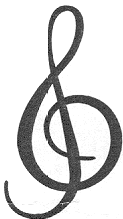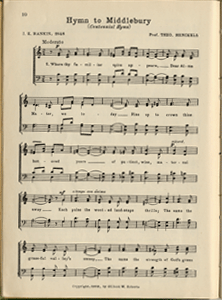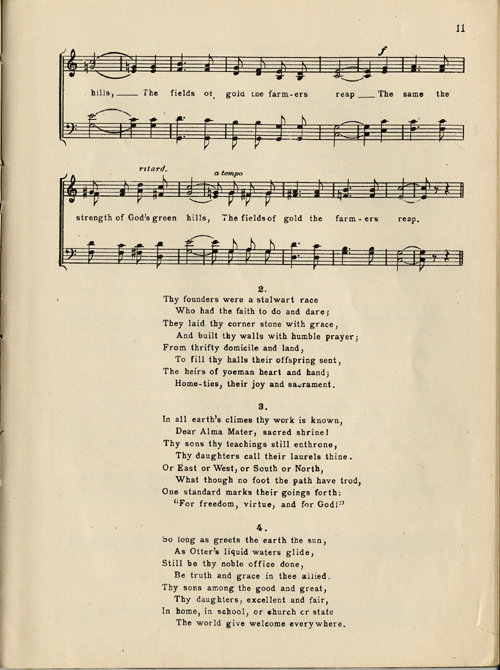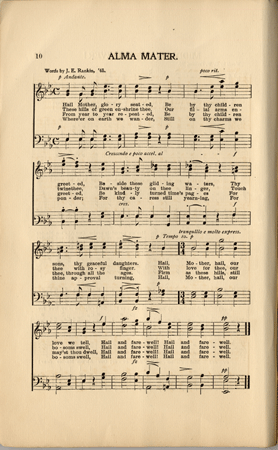|
|
 The Alma Mater
The Alma Mater 
The earliest published version of a Middlebury College Alma Mater was
written by James Edward Pierce, Class of 1861, for Middlebury College's
60th Anniversary Celebration on November 20 1860. "original Ode,"
complete in four verses, was published along with the proceedings of
the event. A musical score does not accompany the poem so it is not
certain if it was sung.
| When the next version of the Alma Mater appears, it
is not officially called the Alma Mater. The four verse, "Centennial
Hymn," words by J.F. Rankin (class of 1848) is published as
a song pamphlet and is performed at the College's Centennial Celebration
of 1900. The same song appears in the Middlebury College Songbook,
1902, and as "Hymn to Middlebury (Centennial Hymn)." It
first appears officially titled, "Alma Mater," as a 1907
song pamphlet, and subsequently in the 1940 Middlebury Song Book,
the 1942 Middlebury Song Book, and various "Songs and Cheers"
pamphlets, until 1949. |


|
 |
Also published in the 1902 Middlebury College Song
Book is another song written by J.E. Ranking, entitled "Alma
Mater." This version did not have the popularity of the Hymn
For Middlebury (Centennial Hymn," so it was dropped as the
Alma Mater and, eventually, from subsequent song publications altogether. |
| In the Spring of 1942, Margaret Dounce Dale and Dorothy
Hood Bitman collaborated on a song for the annual Cane Ceremony
held at the Forest Hall Arcade. Their tune, "Walls of Ivy,"
is performed by the women of the class of 1943 to serenade the senior
women. It proves to be popular throughout succeeding years and is
regularly included in various Middlebury College song pamphlets.
By the publication of the 1949 Middlebury College Songs, "Walls
of Ivey" appears and Rankin's "Alma Mater" is omitted.
Not long afterward, Middlebury College adopts "Walls of Ivey"
as the official Alma Mater, and honors it still more than fifty
years later. |
 |
****CONTEST****
|